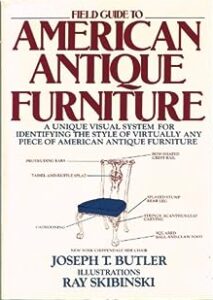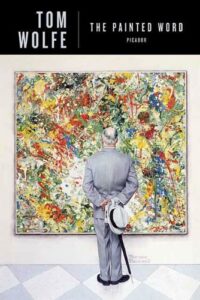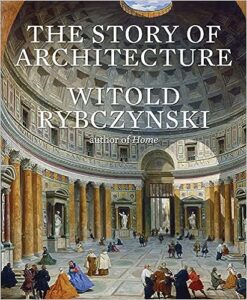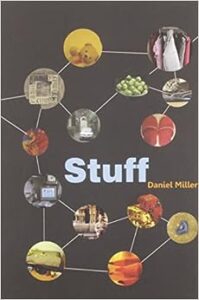A reader, Louise, asked about my favorite books on THINGS, so I compiled a list for her:
1. Highbrow/Lowbrow: The Emergence of Cultural Hierarchy in America by Lawrence Levine
 A must have for placing objects squarely into the camp of either high or low brow culture, my top choice is Highbrow/Lowbrow: The Emergence of Cultural Hierarchy in America by Lawrence Levine. The book satirically discusses 150 years of American cultural history of objects such as hotdogs and filet mignon, class conscious breeds of dogs, the opera verses jazz, the Marx Brothers verses Shakespeare. Reading this helped me understand how consumerism of the late 19th to mid 20th century led to today’s defined, inflexible, separation of class into levels of cultural literacy. It deals with the nature of “culture,” (serious vs. popular, high art vs. kitsch, etc.) using OBJECTS as markers.
A must have for placing objects squarely into the camp of either high or low brow culture, my top choice is Highbrow/Lowbrow: The Emergence of Cultural Hierarchy in America by Lawrence Levine. The book satirically discusses 150 years of American cultural history of objects such as hotdogs and filet mignon, class conscious breeds of dogs, the opera verses jazz, the Marx Brothers verses Shakespeare. Reading this helped me understand how consumerism of the late 19th to mid 20th century led to today’s defined, inflexible, separation of class into levels of cultural literacy. It deals with the nature of “culture,” (serious vs. popular, high art vs. kitsch, etc.) using OBJECTS as markers.
2. Distinction: A Social Critique of the Judgment of Taste by Pierre Bourdieu
Laugh if you must, but I found Distinction: A Social Critique of the Judgment of Taste by Pierre Bourdieu viciously amazing. Translated from a French sociologist’s study of the worlds of meaning behind a bourgeois French person’s choice of clothing, menu, furniture, and leisure time distinctions. The author rips apart the age old belief of the French as tastemakers. Bourdieu believes no judgment of taste is innocent, in a word we’re all snobs. Each choice of an object or event is a strategy of social pretension.
3. Field Guide to American Antique Furniture by Joseph T. Butler
 With fabulous drawings of period styles, I chose Field Guide to American Antique Furniture: A Unique Visual System of Identifying the Style of Virtually Any Piece of American Antique Furniture by Joseph T. Butler as my furniture bible. I see it at swap meets and estate sales as this is the STYLE GUIDE to the ERA of TASTE level of period styles, and not just American. If you inherited furniture this guide is for YOU..
With fabulous drawings of period styles, I chose Field Guide to American Antique Furniture: A Unique Visual System of Identifying the Style of Virtually Any Piece of American Antique Furniture by Joseph T. Butler as my furniture bible. I see it at swap meets and estate sales as this is the STYLE GUIDE to the ERA of TASTE level of period styles, and not just American. If you inherited furniture this guide is for YOU..
4. The New Fine Points of Furniture: Early American: The Good, Better, Best, Superior, Masterpiece
The kings of all famous American antiques dealers, Israel and Albert Sack’s first version of Fine Points of Furniture: Early American – Good, Better, Best first published in 1950. In 1993 Albert updated the book and added photos. Sack includes sale prices of objects sold at current auctions and why those prices were achieved, this new version which added Superior, and Masterpiece to the subtitle Good Better Best….
5. The Painted Word by Tom Wolfe
 The Painted Word (1975), by none other than Tom Wolfe (The Electric Cool Aid Acid Test, 1968), gives a hilarious satire on modern art and who determines its WORTH in our culture. Wolfe’s book deals with modern art. He became famous for his comment on modern art “without a theory to go with it, I can’t see the painting.” Wolfe lambasts the modern art critics of the 1970s writing that the kings of cultureberg (Clement Greenberg, Harold Rosenberg, and Leo Steinberg), dominated TASTE with “theories” which controlled an insular world of connoisseurs and museums.
The Painted Word (1975), by none other than Tom Wolfe (The Electric Cool Aid Acid Test, 1968), gives a hilarious satire on modern art and who determines its WORTH in our culture. Wolfe’s book deals with modern art. He became famous for his comment on modern art “without a theory to go with it, I can’t see the painting.” Wolfe lambasts the modern art critics of the 1970s writing that the kings of cultureberg (Clement Greenberg, Harold Rosenberg, and Leo Steinberg), dominated TASTE with “theories” which controlled an insular world of connoisseurs and museums.
Why the title? Wolfe said, “No more realism, no more representational objects, no more lines, colors, forms, and contours, no pigments, no brush strokes…art made its final flight, climbed higher; it disappeared up its own fundamental aperture, and came out on the other side of art theory!” A readable short, small volume, the art world HATED it at the time of publication. Today it’s a classic about the de-objectification of art.
6. Home: A Short History of an Idea by Witold Rybczynski
Lest we judge highbrow/lowbrow houses and buildings, Witold Rybczynski discusses in plain language how the social, cultural, and class concept of home and household came to be (from the Middle Ages on) in Home: A Short History of an Idea. Social and cultural judgments and changes influenced style, and even technological advances such as plumbing (or not), as well as cooking, heating, sleeping, decoration, and furnishings. Very insightful yet easy to read. You’ll never look at your home in the same way again.
7. The Story of Architecture by Witold Rybczynski
 Also, by the greatest writer of interior spaces, check out Rybczynski’s The Story of Architecture. This book traces the interconnection between cultural, technological, economic, and social change, and architecture. The lavish illustrations help me put a name to a style even if that style is a REVIVAL style.
Also, by the greatest writer of interior spaces, check out Rybczynski’s The Story of Architecture. This book traces the interconnection between cultural, technological, economic, and social change, and architecture. The lavish illustrations help me put a name to a style even if that style is a REVIVAL style.
8. The Poetics of Space by Gaston Bachelard
Thirty years since its first publication in English, French philosopher Gaston Bachelard’s The Poetics of Space still ranks as my favorite, most lyrical explanation of “home” and the physiology of “interior” life/lives—no pun intended. Bachelard pioneered the thought that your home reflects your psyche. He goes beyond ethnography and analyses the psychology of OTHER interiors, not only those of the Western World.
9. Stuff by Daniel Miller
 Daniel Miller is probably my favorite writer in the new field of “material culture.” He said, “Things make us as much as we make things.” A great example of the relationship between our physical bodies and things is how we change ourselves with carefully selected clothing. Miller explores this concept in his book Stuff. He believes we’re created by material as well social relations. I love his use of the word “accommodate.” Miller takes us into the very private worlds of our home possessions and our “processes of accommodating” —the process of making space for THINGS. He discusses those objects we use to define our lives and the objects we lean on to cope with death.
Daniel Miller is probably my favorite writer in the new field of “material culture.” He said, “Things make us as much as we make things.” A great example of the relationship between our physical bodies and things is how we change ourselves with carefully selected clothing. Miller explores this concept in his book Stuff. He believes we’re created by material as well social relations. I love his use of the word “accommodate.” Miller takes us into the very private worlds of our home possessions and our “processes of accommodating” —the process of making space for THINGS. He discusses those objects we use to define our lives and the objects we lean on to cope with death.
10. Material Cultures: Why Some Things Matter by Daniel Miller
Continuing with Daniel Miller’s books, I am a big fan of an ethnographic approach to artifacts. If you are too, read the short essays in his book Material Cultures: Why Some Things Matter. Each essay focuses on Miller’s observations of the uses of “objects” in diverse places around the world in different cultures. Miller studied the objects used in those cultures throughout his world travels. Finally, he theorizes that the study of objects contributes to the understanding of the very meaning of a cultural artifact, whether that artifact be an event, ritual, or thing. Perhaps, he says, more than media or language, objects are the effective means for understanding social values and contradictions within all cultures that use objects.